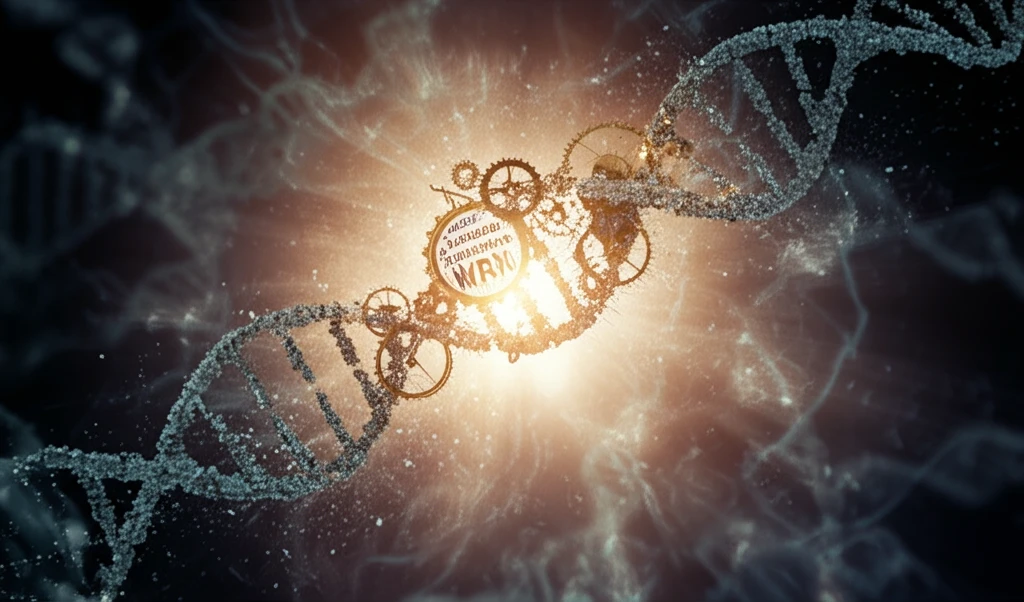
The Werner Syndrome: Unlocking the Secrets of Premature Aging and DNA Repair
"Delve into the groundbreaking research on Werner Syndrome Protein (WRN) and its critical role in maintaining genome stability, offering insights into cancer prevention and healthy aging."
Werner Syndrome (WS) is a rare, inherited disorder that causes individuals to age much faster than normal. People with WS often develop conditions typically seen in older adults, such as arteriosclerosis, cataracts, osteoporosis, and type II diabetes, much earlier in life. This condition is linked to a higher risk of certain cancers, specifically those of mesenchymal origin, making it a critical area of study for both aging and cancer research.
At the heart of Werner Syndrome is a faulty gene that produces a protein called Werner Syndrome Protein, or WRN. This protein is unique because it acts as both an exonuclease and a helicase, meaning it can both unwind and cut DNA. WRN is crucial for maintaining the integrity of our DNA during replication, repair, and recombination – all essential processes for healthy cells.
Recent studies have illuminated WRN's role in managing replication forks, structures that form when DNA is being copied. WRN helps these forks progress smoothly, restart when they get stuck, and prevent them from being excessively processed by other enzymes. Understanding how WRN functions at these forks can provide valuable insights into how we age and how we can prevent cancer.
Why DNA Replication and WRN Are Key to Aging and Cancer Prevention?

DNA replication is a fundamental process where a cell duplicates its DNA to create two identical copies. This complex process is carefully monitored by numerous proteins to ensure accuracy. However, errors can occur, potentially leading to cellular changes that affect health. The cell cycle includes checkpoints that help ensure proper DNA segregation into daughter cells.
- Facilitating Replication Fork Progression: WRN helps replication forks proceed smoothly, which is essential for efficient DNA duplication.
- Restarting Stalled Replication: If a replication fork gets stuck, WRN assists in restarting the process, preventing prolonged pauses that can lead to DNA damage.
- Protecting Replication Forks: WRN safeguards replication forks from collapsing or being excessively processed, which can cause genomic instability.
The Future of WRN Research: Can We Stop Aging and Cancer?
While much has been learned about WRN's functions, several questions remain. How is WRN's activity regulated at the nucleotide level to prevent cancer and premature aging? Identifying the phosphorylation events and interacting proteins could reveal novel mechanisms that explain how replication stress contributes to WRN's biological functions. Understanding how WRN stabilizes its interacting partners at replication-associated DSBs could advance our knowledge of the pathophysiology of aging. By fully understanding WRN's role, we can develop targeted treatments to combat the effects of aging and prevent cancer.
